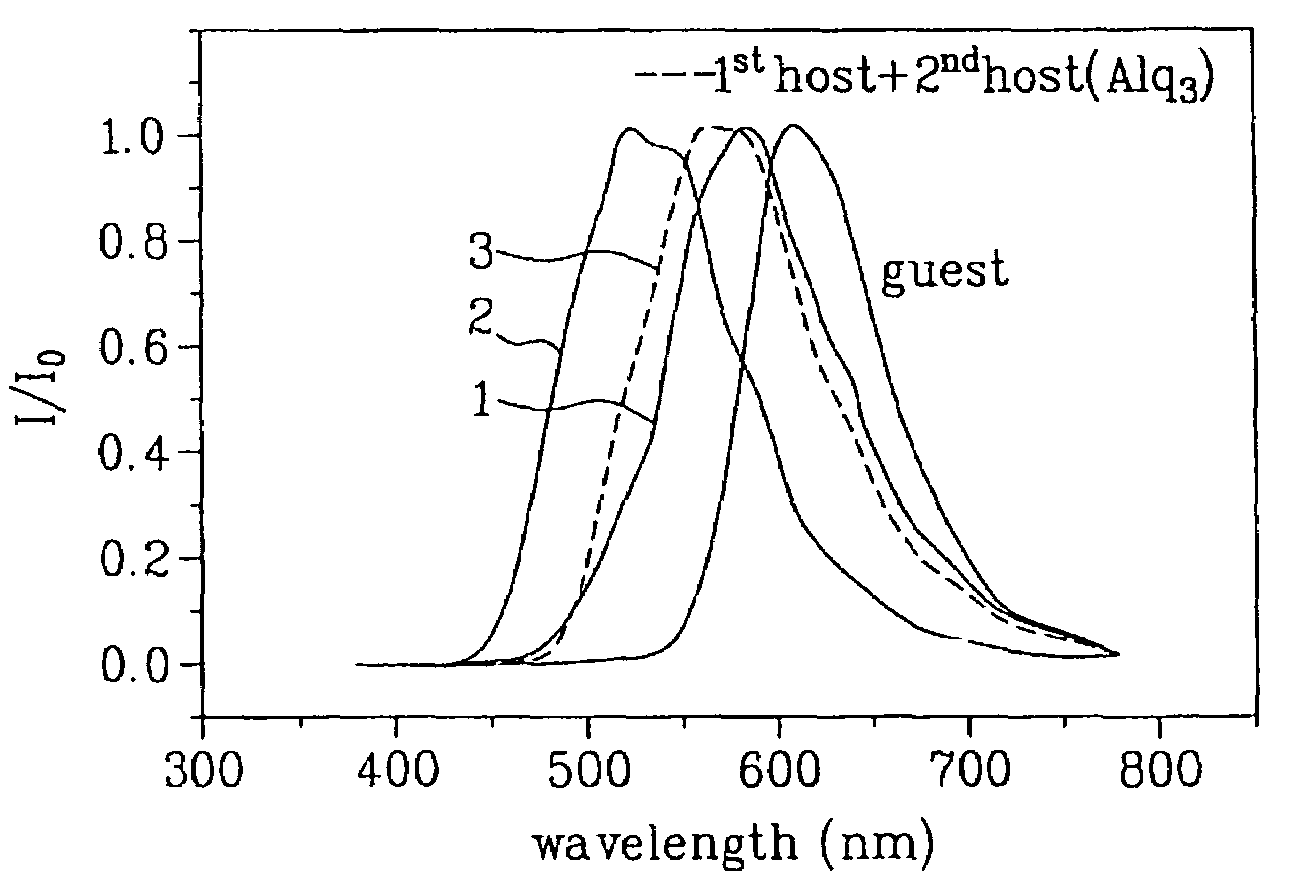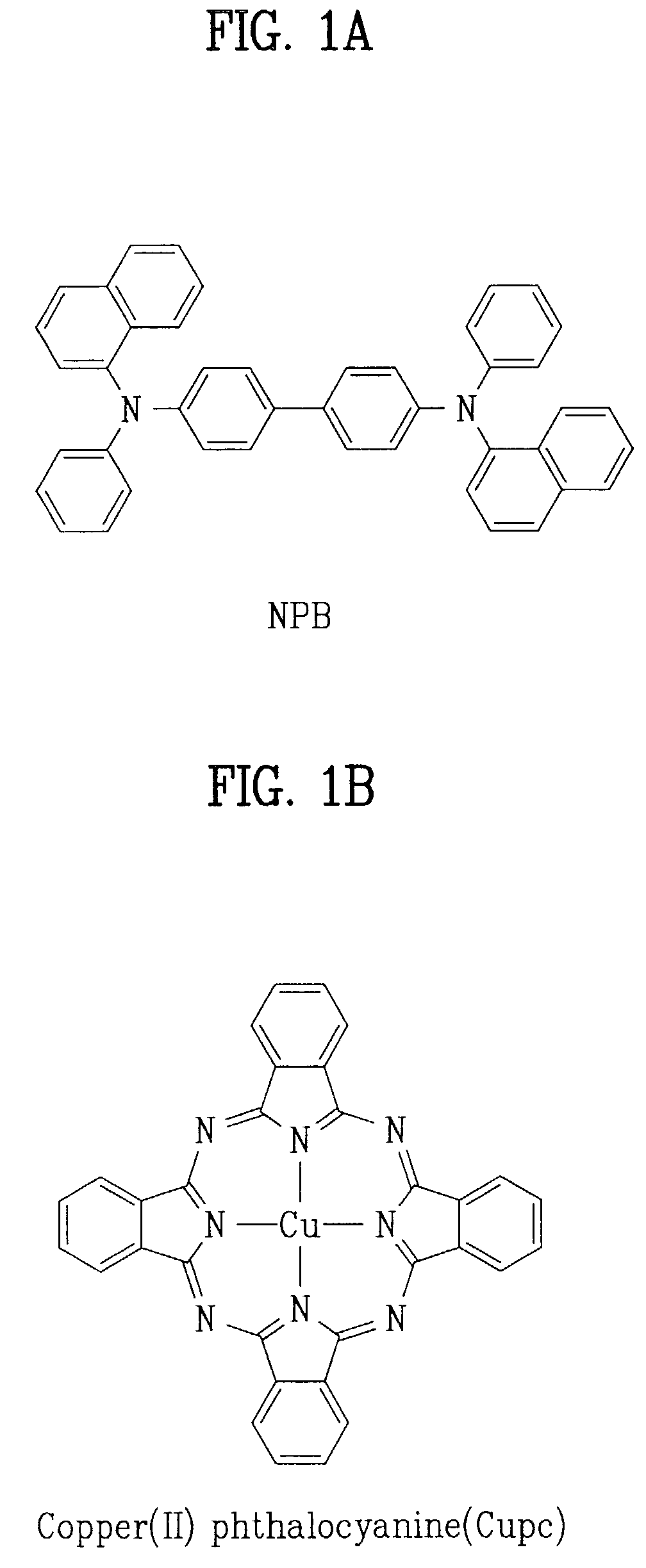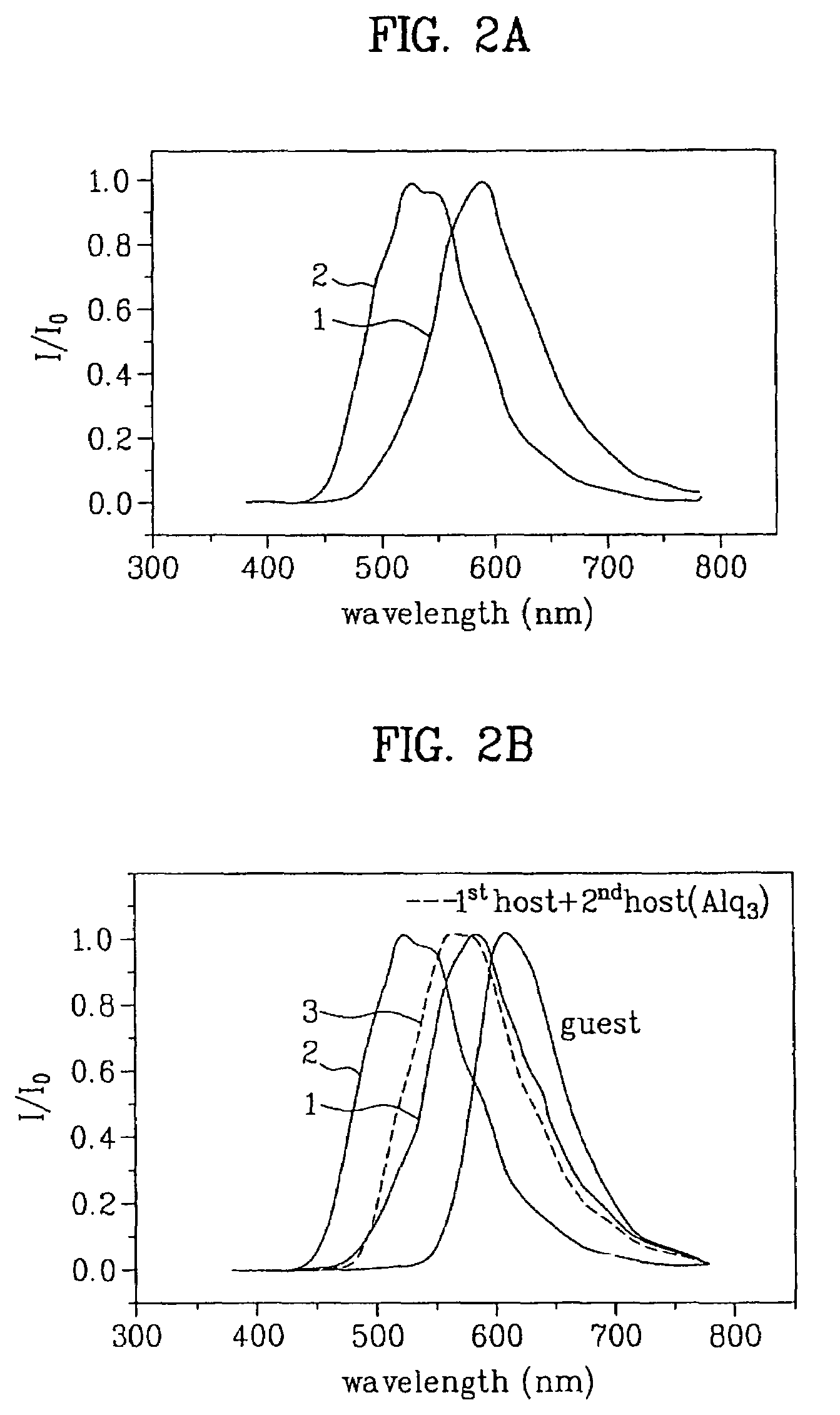Organic electroluminescent device
a technology of electroluminescent devices and electroluminescent devices, which is applied in the direction of discharge tube luminescence screens, acridine dyes, anthracene dyes, etc., can solve the problems of reducing the efficiency of the device, reducing the durability of the device, and difficulty in realizing the high so as to increase the efficiency of the red luminescence
- Summary
- Abstract
- Description
- Claims
- Application Information
AI Technical Summary
Benefits of technology
Problems solved by technology
Method used
Image
Examples
synthesis example 1
Synthesis of J-1 Compound
[0089]1) Synthesis of 3-bromoperylene
[0090]
[0091]First of all, 2 g (0.008 mol) of perylene is dissolved in DMF (50 ml) out in 2-necks-r.b.f, and then 1.41 g of NBS (0.008 mol) dissolved in DMF (40 ml) is dropped in the 2-necks-r.b.f. slow at room temperature.
[0092]The solution is stirred for an hour, and then the reaction is terminated.
[0093]The reactant is added to methanol for precipitation, whereby precipitate is obtained. The precipitate is then filtered, whereby 2 g (75%) of 3-bromoperylene is extracted.
[0094]2) Synthesis of 3-(N,N-diphenylamino)-perylene
[0095]
[0096]0.5 g (0.00151 mol) of 3-bromoperylene obtained in the above synthesis method 1), 0.51 g (0.003 mol) of diphenylamine, 0.233 g (0.0023 mol) of sodium ter-butoxide, 0.046 g of BINAP{2,2′-bis(diphenylphosphino)-1,1′-binaphthyl}, 0.016 g of Pd(II)acetate, and 50 ml of toluene are admitted into a 2-necks-r.b.f. so as to be refluxed for 24 hours.
[0097]Toluene is removed from the reaction solution...
synthesis example 2
Synthesis of J-5 Compound
[0099]1) Synthesis of (4-bromophenyl)-diphenyl-amine
[0100]
[0101]10 g (0.058 mol) of p-bromoaniline, 15 ml (0.133 mol) of iodinebenzene, 0.5 g of 1,10-phenanthroline, 0.32 g of CuCl, 25 g (0,464 mol) of KOH, and 100 ml of toluene are admitted into a 250 ml-3-necks-r.b.f. having a Dean-Stark trap installed thereat so as to be refluxed for 12 hours.
[0102]Toluene is removed from the reaction solution by decompressed distillation. The reaction solution is washed with water, and then recrystallized with methylene chloride / methanol, whereby 15.3 g (81%) of (4-bromopheny)diphenylamine is obtained.
[0103]2) Synthesis of 4-(diphenylamino)phenylboronic Acid
[0104]
[0105]3.4 g (0.0105 mol) of (4-bromophenyl)-diphenyl-amine is admitted into a well-dried 3-necks-r.b.f. so as to be dissolved using 40 ml of dry diethylether.
[0106]Then, a bath of dry-ice (−78° C.) is installed, on which n-BuLi (1.6M, 9.84 ml, 0.0156 ml of hexane) is dropped slowly. A reaction temperature is inc...
synthesis example 3
Synthesis of J-17 Compound
[0117]
[0118]5 g (0.149 mol) of 9,10-dibrmoanthracene, 9.8 g (0.0447 mol) of N-phenyl-1-naphthylamine, 5.37 g (0.052 mol) of tert-butoxide, 0.46 g of BINAO, and 0.1 g of Pd (II) acetate are admitted into a 1-neck-r.b.f., and 130 ml of toluene is added thereto. And, the solution is refluxed so as to be stirred for 30 hours.
[0119]Toluene is removed by decompressed distillation, and the toluene-free reaction solution is washed twice.
[0120]Recrystallization is carried out thereon using THF and methanol.
[0121]Hence, 3.6 g (40%) of compound is obtained.
[0122]In the THE solvent, a PL peak λmax is 520 nm.
PUM
| Property | Measurement | Unit |
|---|---|---|
| thick | aaaaa | aaaaa |
| thick | aaaaa | aaaaa |
| temperature | aaaaa | aaaaa |
Abstract
Description
Claims
Application Information
 Login to View More
Login to View More - R&D
- Intellectual Property
- Life Sciences
- Materials
- Tech Scout
- Unparalleled Data Quality
- Higher Quality Content
- 60% Fewer Hallucinations
Browse by: Latest US Patents, China's latest patents, Technical Efficacy Thesaurus, Application Domain, Technology Topic, Popular Technical Reports.
© 2025 PatSnap. All rights reserved.Legal|Privacy policy|Modern Slavery Act Transparency Statement|Sitemap|About US| Contact US: help@patsnap.com



